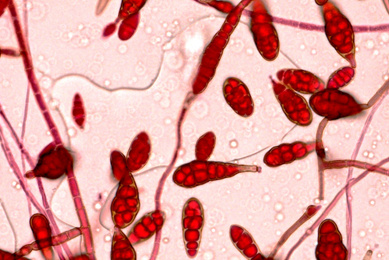Why it's important
The presence of pollutants like heavy metals, raw sewage, xenobiotics, and related recalcitrant compounds in the environment pose a major risk to human, animal, and plant health.1,2 While there have been several practices implemented to reduce, eliminate, or prevent pollution,1,3 additional solutions that are cost effective and sustainable are needed to further reduce the presence of toxic substances in our environment.What’s the solution?
Bioremediation provides a possible answer for the elimination of recalcitrant contaminants from the environment. This technique uses aerobic or anaerobic microorganisms to remove or neutralize environmental pollutants through their natural metabolic pathways.1,4 Depending on the site and its contaminants, bioremediation may provide a safer and more economical approach than chemical or physical methods of remediation.1 Further, microbial populations can be synthetically modified via genetic and metabolic engineering to enable function-specific activities or optimization of existing pathways to improve bioremediation activities.4For bioremediation to be effective, there are a variety of factors that must be accounted for such as the nutrient, atmospheric, and temperature requirements needed for successful microbial growth, concentration and chemical properties of the contaminant, and geology of the site.1,5 Therefore, it is necessary to continuously explore new microbial agents and optimize different bioremediation techniques for various contaminant types and environmental sites for better results.
How we can help
As a leading developer and supplier of authenticated biological materials, ATCC provides the scientific community with access to an expansive collection of credible materials that support bioremediation research applications. Our diverse collection of fungi and bacteria encompasses over 150 strains with potential bioremediation ability and we offer opportunities for commercial use licensing. ATCC is also working on providing the reference-quality, whole-genome sequencing data of these microorganisms through the ATCC Genome Portal. We hope our credible materials paired with whole-genome sequences lead to better functional genomics and metabolic pathway analyses for identifying and developing synthetic models tailored to specific bioremediation needs.
Shahin Ali, PhD
Senior Scientist, Collections, ATCC
Dr. Ali is a Senior Scientist at ATCC with over 13 years of experience in the field of fungal biology and plant-pathogen interactions. Before joining ATCC, Dr. Ali worked for the USDA-ARS at Beltsville Agricultural Research Center, Maryland. He obtained his PhD from University College Dublin, Ireland.
Cara Wilder, PhD, ELS
Senior Scientific Writer, ATCC
Dr. Wilder is a Senior Scientific Writer at ATCC. She has a PhD in Microbiology with background experience working with several pathogenic bacterial species in both in vitro and in vivo environments. Dr. Wilder is the author of numerous publications on varying topics of scientific relevance, including quality control, microbial contamination, assay development, proficiency testing, and multidrug resistance.
Explore our resources for bioremediation studies
Synthetic Biology
Synthetic biology combines science and engineering to gain a deeper understanding of how genetic parts work together and how they can be combined to produce useful applications toward improving human and environmental health.
More Culture guide
Culture guide
Bacteriology Culture Guide
Get expert tips on culturing bacteria including essential information about bacterial growth, propagation, preservation, and application.
More Culture guide
Culture guide
Mycology Culture Guide
Get a detailed mycology guide on the growth, handling, propagation, preservation, and application of yeasts and filamentous fungi.
MoreReferences
- Sharma I. Bioremediation techniques for polluted environment: Concept, advantages, limitations, and prospects. In: Murillo-Tovar MA, Saldarriaga-Noreña H, Saeid A, eds. Trace Metals in the Environment – New Approaches and Recent Advances. London: InTechOpen; 2021: https://doi.org/10.5772/intechopen.90453.
- Rhind SM. Anthropogenic pollutants: a threat to ecosystem sustainability? Philos Trans R Soc Lond B Biol Sci 364(1534): 3391-3401, 2009. PubMed: 19833650
- United States Environmental Protection Agency. Learn About Pollution Prevention. April 7, 2022. Accessed May 11, 2022. https://www.epa.gov/p2/learn-about-pollution-prevention
- Jaiswal S, Shukla P. Alternative Strategies for Microbial Remediation of Pollutants via Synthetic Biology. Front Microbiol 11: 808, 2020. PubMed: 32508759
- Kebede G, et al. Factors Influencing the Bacterial Bioremediation of Hydrocarbon Contaminants in the Soil: Mechanisms and Impacts. Journal of Chemistry 2021. https://doi.org/10.1155/2021/9823362